From Nepali Times (March 25, 2022)
Foreign Minister Wang Yi must use his Kathmandu visit to clear the growing distrust between Beijing and Kathmandu, and seek to better understand Nepal, including its age-old links to Tibet
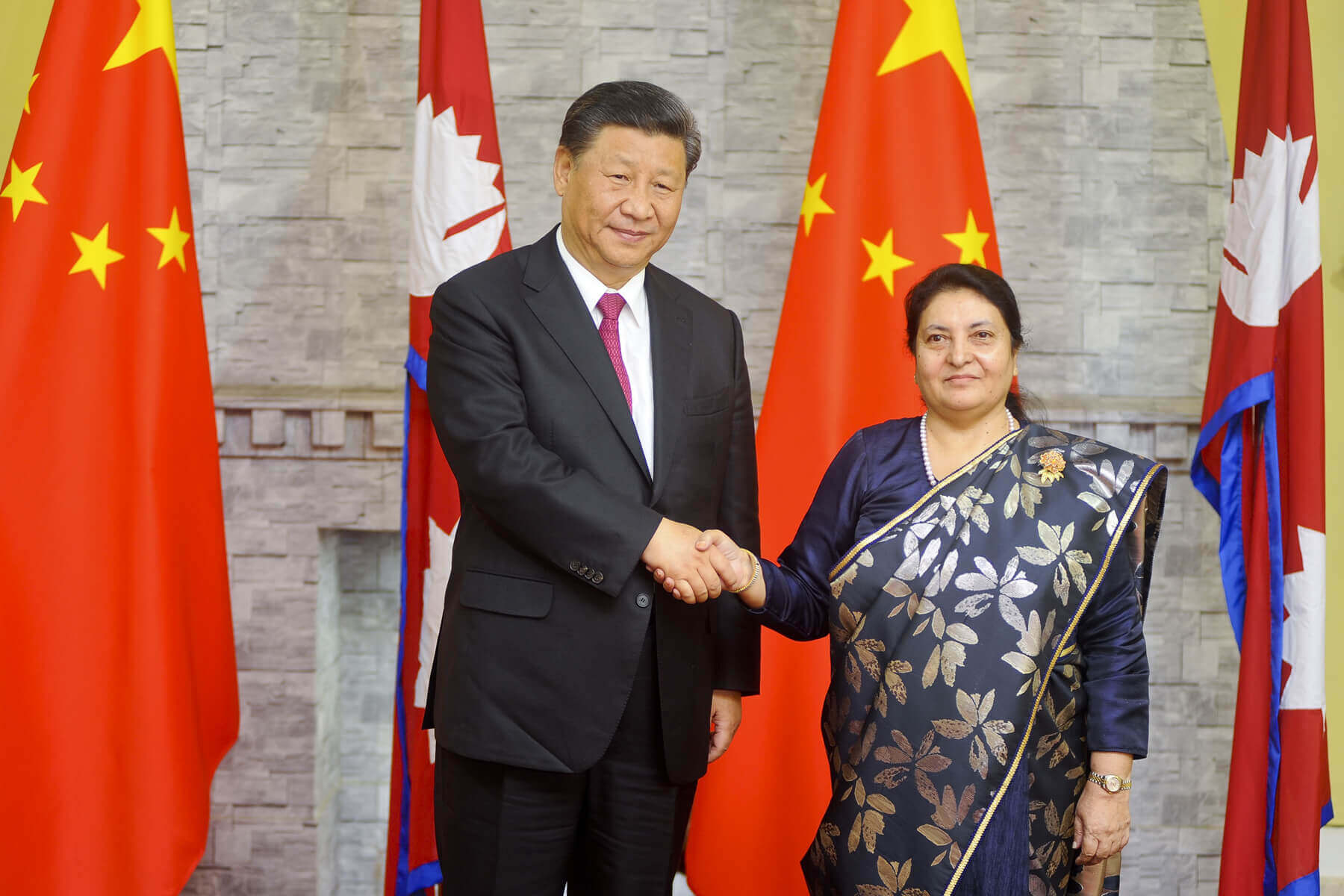
Chinese Foreign Minister Wang Yi has hopefully had his team do some diligent homework on Nepal before arriving in Kathmandu on 25 March, allowing him to understand and unravel the mistakes made over the past couple of years by Beijing’s diplomats and policymakers.
Whether it is geopolitical arrogance or wilful disregard, Beijing seems headed towards repeating mistakes of the kind made by New Delhi, whose attempts at interventionist micro-management tended to backfire. While the elephant seems to have learnt the lesson not to tease the rhino beyond a point, the dragon has not invested time and effort to understand the complexities of Kathmandu’s polity.
Unlike the Nepali ability to reach out to the Indian media and public when New Delhi breathes down hard, there is no such access vis-à-vis China, and Beijing remains inscrutable until it plays its hand. Beijing tends to talk to the outside world through commentators on Global Times and other government outlets, but there is no saying how much weight the individual commentators carry in the Communist Party of China (CPC) inner circle that calls the shots. There is both distance and fog when it comes to Nepali policymakers and opinion-makers connecting with Beijing, and the language barrier does not help.
Just as Nepal and the world are having to adapt to a China that is evolving as a global powerhouse challenging the United States and leaving others (including India) far behind economically and militarily, Beijing must adjust the lens with which it views Kathmandu. It has clearly been lulled by the decades of obsequiousness of Nepali interlocutors, failing to realise that there will be assertion when interventionism crosses a limit. Already, the Chinese position against the Millennium Challenge Project (MCC) and its messing with Kathmandu’s party politics has raised questions about its knowledge base and intentions.
For starters, the Chinese authorities should seek to understand the Nepali mindset through broad-based contact beyond the handful of politicians it has cultivated. It is surprising how Beijing has allowed itself to be identified in the Nepali mind with the disgraced former Speaker Krishna Bahadur Mahara, the murder-accused current Speaker Agni Prasad Sapkota, and, of course, the Maoist supremo Pushpa Kamal Dahal (‘Prachanda’), whose political career is in crisis.
Chinese counterbalance
When we speak of Nepal’s links to China, historically it would mean mainly the relationship with Tibet, including the contact between the Kathmandu Darbar and Potala Palace, the Newa traders of Lhasa, as well as the cross-Himalaya cultural and commercial ties between the Tibetans and the Himali communities of Nepal’s high valleys. As China’s control over Tibet waxed and waned, Nepal continued to trade with the north, at times even exercising extra-territoriality and minting coins for Lhasa.
Proximity also brought conflict. A war with Tibet and its backer, the Chinese emperor, was fought in 1792 and Kathmandu was defeated, leading to a five-yearly mission bearing tributes to Beijing. Even though China’s exercise of suzerainty over Nepal remained notional, Kathmandu kept the relationship alive to counter the growing power of the East India Company.
Continuing with the strategy, in the modern era, Kathmandu placed Beijing on a high pedestal as a counterweight to the overwhelming cultural, geopolitical and economic presence of New Delhi in national affairs. For this reason, the CPC leadership has had it easy over the decades, with visiting Nepali personages acting like supplicants rather than equals. With Kathmandu’s Nepali politicians, diplomats and civil society leaning over backwards to be nice, Beijing has failed to spend time and effort in understanding the larger Nepali society and its convictions.
Beijing was plainly embarrassed with the rise of the insurgency espousing Mao Zedong Thought in the mid-1990s, but as the rebels came above-ground and the monarchy went into eclipse, Beijing’s leaders cultivated supremo Dahal, perhaps seeking a stable long-term partnership. They were obviously unaware of Dahal’s fickle nature, his politics based on populism and opportunism rather than ideology and principle.
The revolving-door visits of countless Nepali bureaucrats and politicians to China, paid for by Beijing, essentially became opportunity for ‘foreign travel’, replete with per diems for shopping expenses. Rather than splurge on such hospitality meant to dazzle the visitors with China’s economic momentum, Beijing would have done better to spend on scholars and diplomats studying Nepal’s strivings as a democratic and pluralistic society.
Meek no more
Before the current proactive phase in the era of Xi Jinping as president, Chinese diplomats were stand-offish on Nepal, their only interest being that no ‘anti-China’ (read pro-Tibet) activities receive support from within Nepali territory. If you discount the brief period up to the early 1970s when CIA-supported Khampa rebels managed to operate out of Mustang, Kathmandu has had no stomach for supporting Tibetan independence nor Tenzin Gyatso, the 14th Dalai Lama, in his exile.
Even though this policy causes some disquiet among the Himali communities of the high valleys who practice Mahayana/Nyigma Buddhism, they constitute too small a group, too divided by extreme geography, to create a politically significant front.
In the 1960s, the sage counsel of Chinese leaders including Mao Zedong and Zhou En-Lai to the visiting Nepali delegations was to regard Nepal as squarely in the Indian sphere of influence south of the Himalayan ridgeline. “We will help you where we can, but try not to irritate New Delhi,” was the Chinese line.
That policy has now seen a reversal. With its rise as a global power snapping at the heels of the United States, Beijing has revised its engagements globally, in South Asia and in the Himalaya. Chinese diplomats have abandoned their self-effacing act of decades, and the Xi Jinping era has seen the rise of aggressive diplomats (战狼外交) who speak with unabashed self-interest and confidently lambast opponents.
The Chinese moves along the Ladakh, Sikkim and Arunachal frontiers of India, and the border with Bhutan, are the face of a proactive Beijing bent on establishing facts on the ground, as it is doing in the South China Sea. Meanwhile, China reaches out across the world with the Belt and Road Initiative to provide infrastructure financing even as it turns every world crisis to its advantage, from the advent of Covid-19 to the Russian invasion of Ukraine.
Nepal needs to understand this ‘new China’, including its momentum on the world stage, its ability to cow down India, its expanded military presence on the Himalayan frontier – and come up with a China policy that is respectful, mindful of Beijing’s likes and dislikes, and yet able to protect its own democratic path and agency.

Nepal’s open society
Howsoever decrepit the polity might look and feel, for now, Nepal is a haven within South Asia for its openness, fundamental freedoms and inter-community relations. It must resist the movement towards ‘closed society’ that is evident in the rest of the region including Big India, and nor should the liaison with Beijing require compromising on existing freedoms.
However, criticism of Chinese policy, or defending the rights of Tibetan refugees under international convention and Nepal’s own past practice, immediately brings forth Beijing’s displeasure. The trolls within Nepal also become hyperactive, hurling accusations at the critics for being ‘free-Tibet wallahs’, used as an abuse, and lackeys of Western imperialism.
Amidst such a backlash, civil society has gone quiet on the matter of statelessness among Tibetan refugees. There is neither a discussion on the overt Chinese interference along the northern districts: nor does Kathmandu’s civil society allow itself to express opinion on the oppression of the Uighyur of Xinjiang, or the rapid erosion of freedoms in Hong Kong (with its significant Nepali population).
The Nepali submissiveness towards Beijing has historical roots, even though it may have had practical purposes. At bilateral meetings before the substantive agenda is taken up, Chinese delegations expect the by-rote declaration from the Nepali side of fealty to the one China policy and commitment never to allow anti-China activities from its territory.
To avoid further humiliation at the hands of the visiting delegations, it is almost as if we need a billboard to be put up at the Tribhuvan International Airport arrivals area, with large letters declaring once and for all: “Nepal supports the One China Policy! It will never allow its territory to be used for anti-China activities!”
 CPC and MCC
CPC and MCC
One hopes that Beijing will find reason for introspection on its Nepal policy, whose implementation tends to reflect imperiousness and lack of homework. Some examples should suffice to make the point, ending with the fiasco of the Chinese stand on MCC.
The visit by President Xi Jinping to Kathmandu in October 2019, the first by a Chinese president in 23 years, had several bracing moments, but one grating, troublesome aspect. Denying dignity to the host country, Xi used the occasion to read out a blunt warning meant to be heard by his Nepali hosts vis-à-vis Tibet but also by democracy demonstrators in Hong Kong, and beyond: “Anyone attempting to split China in any part of the country will end in crushed bodies and shattered bones.”
Kathmandu commentators, traditionally nonplussed before Beijing’s real and perceived clout, did not adequately respond to Xi’s statement. Meanwhile, while the Kathmandu discourse has moved on to other contentious issues, there has been inadequate analysis of Beijing’s faux pas in publicly coming out against the MCC grant project.
China seems to have decided early on that the straight grant of $500 million for infrastructure (mainly transmission lines) would needlessly extend American influence on Kathmandu at a time it was making inroads. Nevertheless, Beijing’s initial public stance was to term the decision on MCC an internal Nepali matter. Pleasing Beijing being one of his primary preoccupations, Dahal instructed Speaker Mahara and his successor Speaker Sapkota (both unreconstructed Maoists party cadre even while in the high office) to filibuster and not table the MCC bill presented to Parliament for passage by the K P Oli Government.
Even as the CPN broke apart and the Oli Government fell, the new Prime Minister Sher Bahadur Deuba proved unwavering in his public commitment to pass the MCC bill, even if it meant collaborating with Oli. Beijing suddenly went into overdrive, with its official media coming out publicly against parliamentary adoption. A flank of the Nepali ultra-left and royalist right – ever willing to undermine the system under the new Constitution with whatever means – was more than happy to jump on to the bandwagon and try to make the public believe that the US military would march into Nepal riding the MCC charger.
In the end, Parliament did pass the MCC agreement with a meaningless ‘interpretative declaration’ after the triple-tongued Pushpa Kamal Dahal outdid himself – by whispering outright contradictory positions to the Americans, his coalition partner PM Deuba and his party faithful. In Beijing, the Foreign Ministry spokesperson came out with the official Chinese view, protesting what it called “coercive diplomacy” being used to force Nepal to accept the project – the target being the United States.
Besides being mistaken on the MCC’s merits, Beijing showed lack of sensitivity to Nepal’s right and ability to sign the MCC as per its own evaluation. To think that Kathmandu’s elected representatives are not capable of taking such decisions indicated lack of due diligence by Beijing, whose intemperate outburst suggested to Kathmandu observers that the CPC must have been instigating the anti-MCC campaign all along.
Matters also got to such a pass because of the pusillanimity of Nepali officialdom when confronted with Chinese sensitivities, as has been many times in the past. Two examples will suffice. Chinese engineers designed the expansion of Kathmandu Valley’s Ring Road, which was also originally built by Beijing as an aid project. When activists realised that the design would deliver a superhighway through a densely populated urban space, without adequate crossing points nor pedestrian access, they approached the Government authorities. The bureaucracy, alert to the proclivity of the political bosses, refused to act, saying that approaching the Chinese for modification would only bring their displeasure.
The national flag-carrier Nepal Airlines has been hobbled with five Chinese aircraft (three 17-seater Y-12e and two 56-seater MA-16 turboprops, two given as grants and the rest on credit) which it has not been able to use. There is a gaping hole in the exchequer as a result, but no one in power wants to bell the cat. The politicians across the spectrum refuse to give Nepal Airlines a hearing, which wants to be rid of the airplanes that have been relegated to the long-term parking apron at Tribhuvan International Airport.

There was an invigorating line in President Xi’s banquet speech delivered at the Shital Niwas the presidential palace in October 2019: he confided that among the countries of South Asia, it was Nepal that the people of China wanted to visit the most. It is the inefficiency of Nepal’s tourism sector that the President Xi’s quote has not been used to promote Nepal, which could provide an important post-Covid tourism boost even today.
Despite problems with tourism planning, it had become clear, long before Covid set in, that tourists from Mainland China will be a mainstay of the Nepali economy. Before the Covid closures, Kathmandu, Pokhara and Lumbini had already emerged as major destinations for Chinese travellers, the only challenge being to attract clientele from a higher economic bracket. Before Covid, Kathmandu was already better connected by air to half a dozen Chinese cities, whereas most flights to India tend to be Kathmandu-Delhi shuttles.
Of the six sites linked to major events in the life of Sakyamuni, all are within present-day India other than his nativity place Lumbini and nearby hometown of Kapilvastu. This itself has enhanced Nepal’s draw for the Chinese, and the opening this year of the international airports at Bhairahawa and Pokhara is bound to lead to a spurt of inbound flights.
It looks like Lumbini/Kapilvastu will be a long-time draw because the Chinese state is keen on promoting Buddhism as a homegrown faith amongst its growing middle class. The challenge for Nepali authorities, including the Lumbini Development Trust as administrators, will be to protect the spiritual, cultural and archaeological sanctity of the Kapilvastu region even as the footfalls shoot up from lakhs to crores in coming years.
Trilateral knot
China’s unprecedented assertiveness along the Himalayan frontier has New Delhi flummoxed and frozen in inaction. From lethal hand-to-hand skirmishes in Ladakh to upturning long-held demarcations along the Line of Actual Control, to rapidly building airbases and other military infrastructure in Tibet, Beijing is progressing with its plans undeterred.
India has been nervous about the Himalayan region as a whole, not just its own frontiers with Tibet/China, since it was defeated in the brief war of 1962. China’s present-day hyperactivity along the frontier with India makes New Delhi additionally concerned about Beijing’s plans vis-à-vis Nepal, which in turn constricts Kathmandu’s geopolitical elbow room between the two Asian giants.
Given the escalated acrimony between New Delhi and Beijing, it is incongruous that back in 2015 the two governments signed an agreement on the high pass of Lipu Lek, to allow passage for Kailash-Manasarovar pilgrims coming up from Uttarakhand. The Limpiyadhura area of which Lipu Lek is part is claimed by Kathmandu, and here too Beijing can be faulted for not practicing due diligence.
The train of events on Limpiyadhura which includes the bilateral India-China agreement, India’s unilateral building of a road up to the pass, and Nepal’s amendment of the Constitution to include the pointy Limpiyadhura finger in official maps, has now delivered a trilateral challenge requiring sagacity on all sides.
The Indo-Chinese agreement on Lipu Lek is one indication of the Chinese strategists eyeing the great Indian market – it will be pilgrims coming up for now, but goods and services going down before long. In that context, Kathmandu observers make the mistake of believing that China’s interest in building expensive infrastructure to Nepal – roads, railways, aviation and communications within the framework of the Trans-Himalayan Multi-Dimensional Connectivity Network – is meant as a bilateral link.
Clearly, for the amount of money required to build the transport infrastructure, the mercantilist communists of Beijing have an eye on the massive market of India’s Gangetic plain and beyond, which can be supplied through railroads and highways breaching the Himalayan ridgeline – the most convenient being the Kimathanka Corridor in east Nepal along the Arun River gorge. Despite current worries about the Chinese, India’s long-term strategy would have goods, services and people move both ways. In the evolving world of trans-Himalayan connectivity, Nepal’s challenge is to benefit more than merely from transit duties.
Even as India-China relations become tense, diplomatically Nepal should resist the temptation of playing one side against the other. The relationship with Beijing and New Delhi have to be consciously delinked, and each and every bilateral issue has to be considered on the merits – with the neighbours made confident that Kathmandu will not play dirty. At the same time, given the presently fraught relationship between the two Asian giants, Nepal needs a third leg to its diplomatic stool, and that is the West. Hence, also, the importance of the MCC bill’s successful passage.
When Nepal is politically stable internally as a vibrant democracy, it will be better able to withstand, demand and expect non-interference from its two land neighbours. With the respectability and neutrality it will command at that point, Kathmandu may actually be able to play a role in helping bridge the distance between Beijing and New Delhi.
Foreign Minister Wang’s visit is opportunity to make amends for the two recent fiascos, clearly arising from the existing imperious attitude, which itself has been nurtured by Kathmandu’s excessive hand-wringing. One mistake was for Beijing to have waded into the swamp of Kathmandu politics, the other the opposition to the MCC project.
Over the past couple of years, Beijing overstepped diplomatic bounds by directing Ambassador Hou Yanqi to openly try to mend the breach within the erstwhile Communist Party of Nepal (CPN). All the while, the Nepali citizenry knew how unworkable it was to expect a CPN (UML) committed to multiparty democracy to have an extended relationship with the unrepentant Maoists led by Pushpa Kamal Dahal. The unification exercise having been a lost cause to begin with, how come Beijing promoted it and sought to shield it?
Would that Beijing understand that Dahal has very little of Mao in him, ‘opportunism for self-preservation’ being his only ideology. While they are introspecting, Beijing leaders may also want to understand the futility of conducting seminars on communist ideology, whether live or on Zoom, with Nepal’s ‘communist’ parties – a wasted exercise by naïve would-be mentors. The CPC leadership must understand sooner than later that Nepal is a multiparty democracy as mandated by the Constitution and public conviction, and if there is need for any instruction on representative government, for example, it would have to go the other way across the Himalaya.
Beijing should feel comfortable that Nepal is a democracy bound by realpolitik to respect China’s very real and utterly powerful un-democracy. For pragmatic geopolitical and economic considerations, Kathmandu would never allow activities within its sphere that would directly affect China’s territorial integrity and political system. The day Beijing understands and respects Nepal’s polity as a competitive multi-party system, which under the 2015 Constitution is duty-bound to safeguard the fundamental freedoms as well as sociopolitical inclusion in a pluralistic society, it will have found the touchstone for a stable, long-term relationship that does not require one-upmanship with countries near and far.
One matter that Foreign Minister Wang would want to mull over is why Kathmandu tends to reserve its ambassadorship to Beijing for the ‘Maoist quota’. Is this because Beijing so desires, or has this to do with the conviction of Kathmandu’s political class that the CPC is soft on the Nepal’s Maoists?
PM Deuba has chosen three eminent citizens as ambassadors to India, the UK and the US, while there is not a whisper of who is to go to Beijing. The post has been vacant for five months. In the national interest and to give due respect to the Beijing relationship, a competent, respected person must be deputed rather than someone who merely has the ear of Pushpa Kamal Dahal.
Himalayan underbelly
Beijing’s policy-makers must understand that Kathmandu will not (and would not be expected to) do anything that would make Beijing nervous about its vulnerable Himalayan underbelly, viz. Tibet. For its part, Beijing should resist the temptation to meddle on matters that are internal to Nepal.
Part of Nepali diplomacy must be to get Beijing to concede the historical and civilisational links between Tibetan and Nepali society, and to consider that as one reason to institute a more relaxed border regime. Further, the Chinese authorities must be made to accept that Nepal will deal with Tibetan refugees on its own terms and with the dignity the individual refugees deserve.
For decades, under a tacit understanding between the two governments, the pilgrim-refugees emerging from the Himalayan passes were be provided papers by the UN refugee agency UNHCR and given safe passage to the Dalai Lama’s exile administration in Dharamshala. Over time, however, Kathmandu’s authorities found it impossible to ignore Chinese insistence that the Tibetans be prevented from crossing the high frontier, and those in Nepal be prevented from celebrating the Dalai Lama’s birthday.
Overly zealous Kathmandu authorities went as far as to engage in refoulment of some refugees, an internationally recognized humanitarian abuse that sadly was not protested enough by Kathmandu civil society.
For half a century, Tibetan refugees went about celebrating the Dalai Lama’s birthday as a matter of course, but as the Home Ministry came down harshly against the show of public reverence, the observance has moved to indoor chapels. Anyone expressing empathy for Tibetan refugees must expect to be trolled as a ‘free Tibet wallah’, which leaves too few to speak on humanitarian ground.
Disallowing public worship and celebrations linked to the Dalai Lama must also be considered a mark of disrespect by the Nepali state and majoritarian society towards the Himali communities. Among them, many are of the Nyingma stream of Mahayana Buddhism and revere the Dalai Lama as also the reincarnation of the bodhisattva Avalokitswara (Karunamaya in the Valley).
The frontier controls demanded by Beijing and applied by Kathmandu has done irreparable harm to these high-mountain communities, which have been locked away from traditional trade, transhumance and cultural linkages with clans and monasteries in Tibet. At the same time, it is interesting that six decades after the takeover of Tibet, Beijing still feels insecure about its hold on the populace of the high plateau. The restrictions at the border points are indicator of Beijing’s anxieties rather than any ‘misdemeanour’ on the part of Kathmandu.
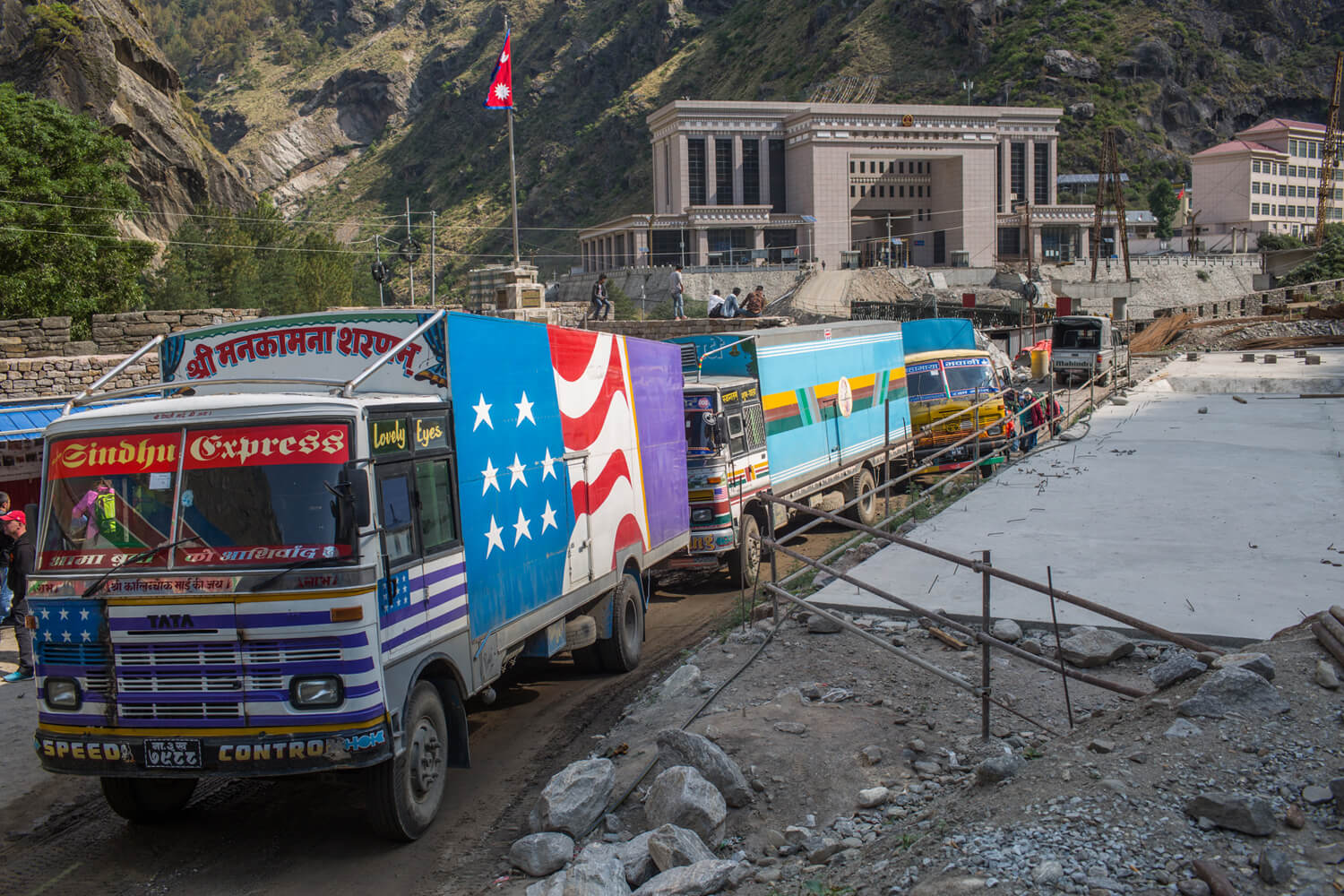
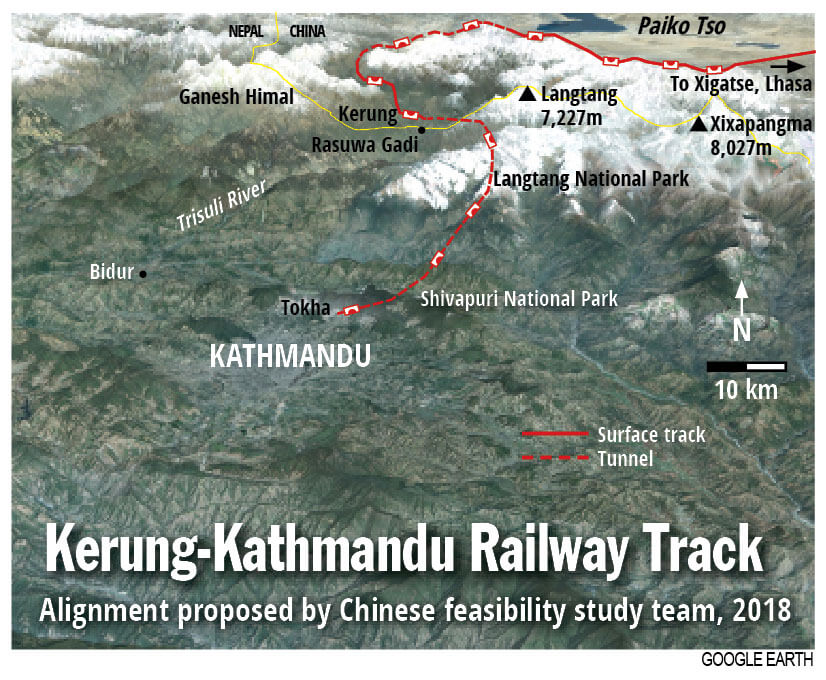
Northern passage
The advantage of the Chinese connection to Nepal in relation to the other mid-sized countries of South Asia are obvious – unlike Bangladesh and Sri Lanka, the land border brings Kathmandu close to the economic growth areas of eastern Tibet and beyond. India’s land border is riddled with disputes that will not end for decades.
It is instructive that the Chinese have reached far to the west – past the Xingiang frontier – to build the China-Pakistan Economic Corridor and develop the Gawadar port of Balochistan. This would indicate that Beijing strategists are more than aware of the possibilities of the short trans-Himalayan distance from Tibet through Nepal to the market of the densely populated Gangetic plain.
Nepal’s links northward in the modern era began with the highway to Lhasa via Kodari (Zhangmu), but in the Panchayat era the inroads by China were limited to Mao badges distributed along the border districts and Chinese pictorial magazines glorifying Mao. As time went on, informal trade brought Chinese consumer items into Nepal. The trade boomed as it was formalised across designated border points.
The easy access to affordable Chinese acrylic wear suddenly meant that Nepal’s poor were warm during the winter months, an advance that has not been much remarked. Before you knew it, Chinese firms were the predominant contractors in Nepal’s mega projects, from airports to irrigation canals to hydropower. Chinese tourists flooded Kathmandu, Pokhara and Lumbini even as Nepali students travelled by the thousands to Mainland China for higher studies. Kunming, Chengdu and Guangzhou became familiar to the Nepali ear.
For all the connections that were already developing, it was the Indian blockade following the adoption of the 2015 Constitution that created the conditions for Nepal to swivel towards China. Seeing how the ‘India locked-ness’ of Nepal made the society and economy so vulnerable, the citizenry stood up to the blockade for over more than five long months, giving the political class (led by then Prime Minister KP Oli) the courage for the China pivot.
PM Oli signed seven agreements with Beijing, which would have taken another decade or more to prepare and sign had it not been the momentum provided by the blockade. The protocols included agreements on bilateral trade, energy, connectivity (via transmission lines, internet, rail and road), and access to seven Chinese seaports and inland ports for third-country transit.
There is grumbling that the agreements have not been implemented so many years after their signing, much as there is dissatisfaction with the delays with moving ahead with Belt and Road Initiative (BRI) projects, or the Trans-Himalayan Multi-Dimensional Connectivity Network.
On BRI, Nepal put up a wish list which would have been wildly expensive to implement, and the Chinese asked Kathmandu to whittle down the list. That is where things stand, and matters need to accelerate with the Wang visit, for Nepal needs the northern passage. The challenge is to locate the huge funding required for the highway and railway schemes. It is important to bear in mind that the newly established Chinese-led Asian Infrastructure Invest Bank (AIIB) does not provide concessional loans.
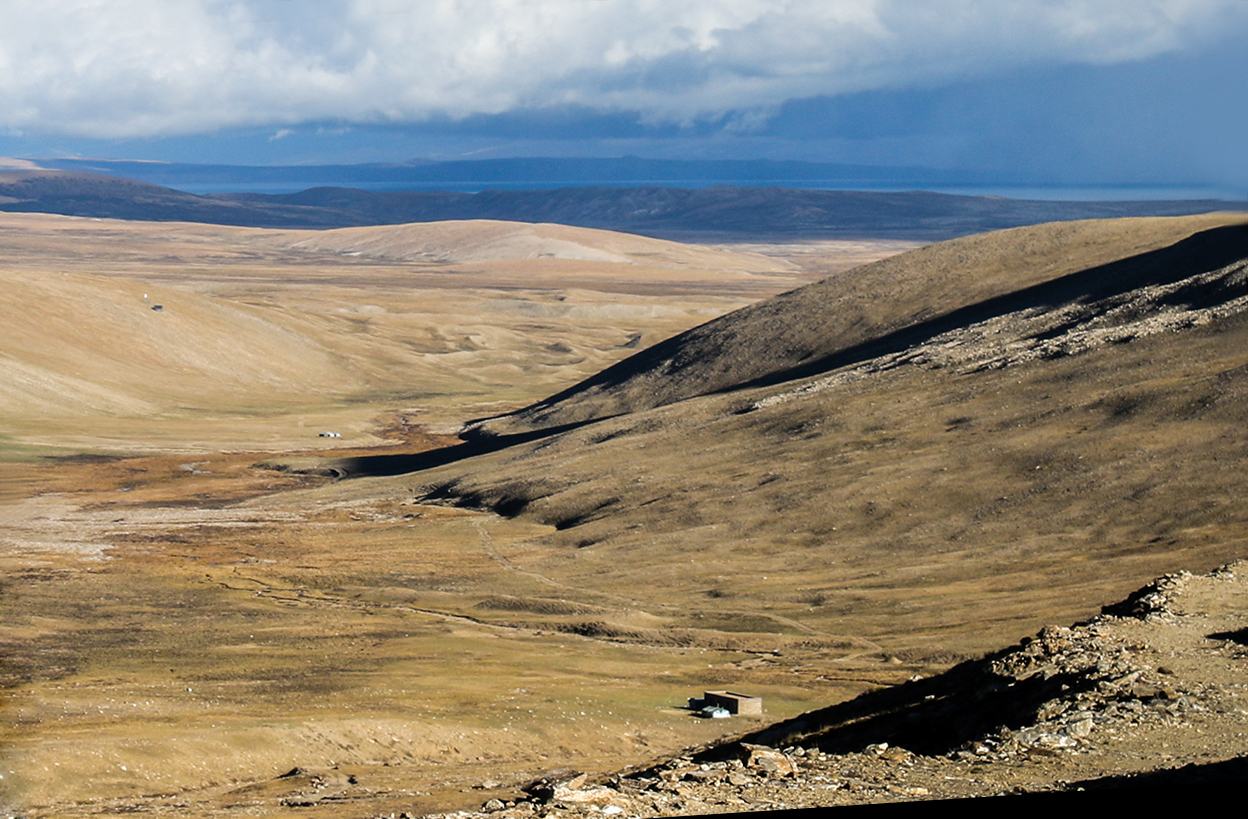
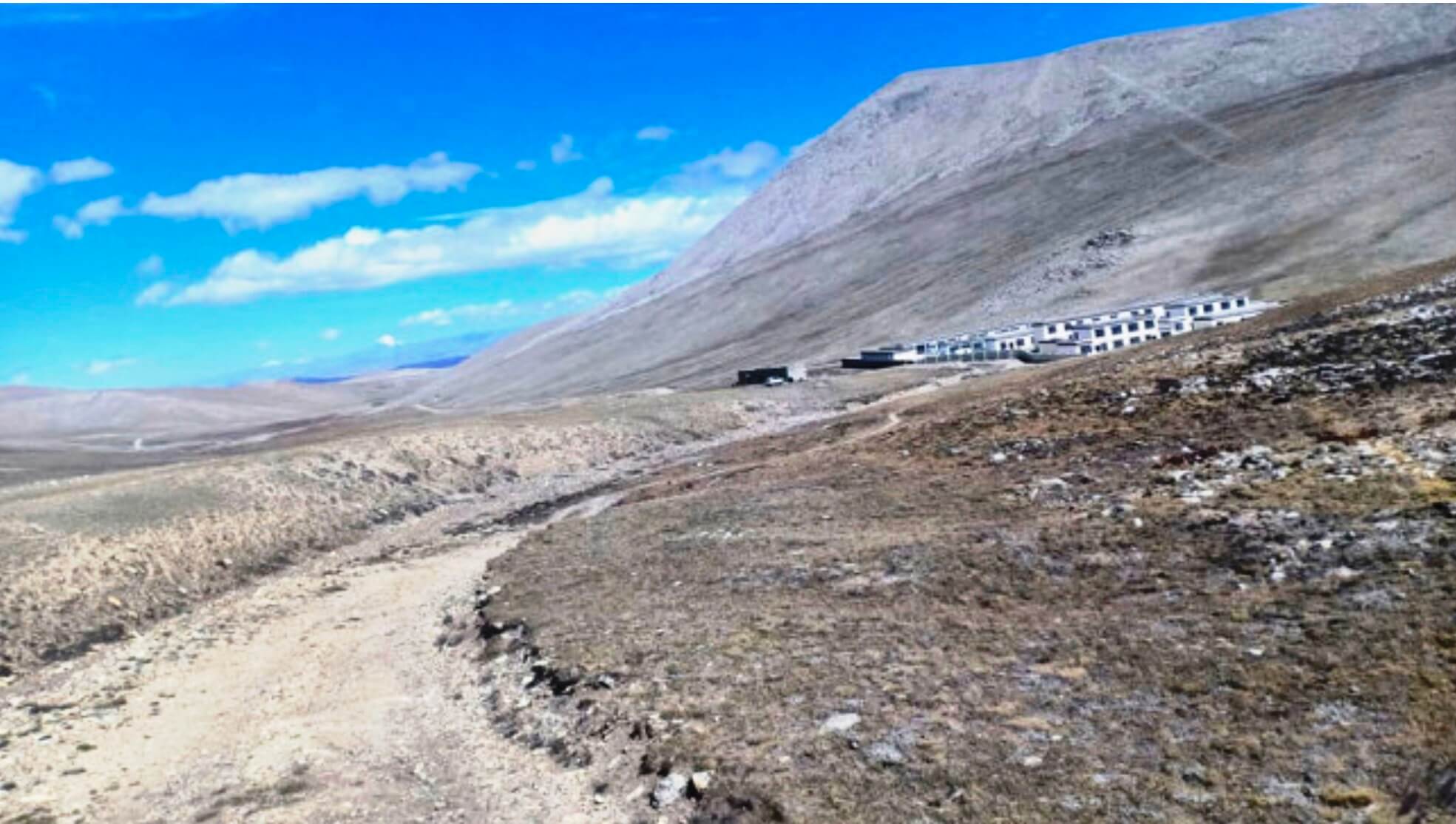
Two-way conversation
The Himali population of Nepal, from the Walung community of the east to the Humli of the west, may make up a small fraction of Nepal’s population, but their cultural dislocation and economic woes due to the tightened border have been significant. In a historical sense, they have not been compensated for the loss of pastures, familial and cultural linkages when the ‘soft’ Himalayan boundary was made rigid.
A critical matter to thrash out during the flying visit of Foreign Minister Wang, therefore, is opening the Nepal-Tibet border points for bilateral commerce, and also allowing locals on both sides to continue their age-old cultural and economic interactions.
In the late 1990’s, Beijing had begun to feel more comfortable vis-à-vis its grip on Tibet, and tourism flows increased commensurately. The surge of protests and self-immolations in Tibet timed to the 2008 Beijing Olympics led to a clampdown in Tibet and restrictions at the Nepal border points. As an example, the vibrant commerce in Khumbu’s Namche Bazaar, replete with Chinese goods brought over the Nangpa La, has been dry since 2008. And everywhere, sadly, memories of the syncretistic trans-Himalayan milieu are fading.
One of the tasks of Chinese diplomats in Kathmandu is to keep a sharp eye on the border districts, even up to the point of meddling in local administration. Meanwhile, Beijing seems bent on using every excuse to keep the border crossing points closed. The April-May 2015 earthquakes led to immediate shut-down from Kimathanka to Kodari to Korala, and then came the Covid pandemic.
For the first time, a frontier issue has flared with China, regarding a border pillar in Humla District, and resolution requires the two governments to deploy a joint team to clear up the matter. Nepal cannot have additional border issues with the northern neighbour, in addition to the old and new ones it already has with India, as they create roadblocks to the ‘connectivity future’ that does beckons.
Meanwhile, in all the border restrictions and closures by Beijing, what comes out clearly is its preoccupation with internal security and international optics in relation to Tibet. Against this, Kathmandu must develop its voice to be able to have a bilateral conversation with Beijing – it cannot forever remain a supplicant awaiting the firman from the CPC.
The world is changing dramatically, the Himalayan chain is no longer a barrier for commerce, and the Chinese railway has arrived in the Tibetan plateau, as far as Shigatse and pushing westward along Nepal’s north towards the Changtang. Only a confident Nepal can take advantage of the commercial possibilities, to develop its own economy and provide passage to India, Bangladesh and the Bay of Bengal.
Kathmandu should also generate courage of its convictions, which can only, with the confidence that comes from political stability within democracy, be able to argue as required with Beijing on important matters. It should be able to say, for example: What do we do with these grounded airplanes that were foisted on us?
China having become a major destination for higher studies by Nepali students, and a major source of Nepali imports, there is today unprecedented understanding in Nepal of China’s people, government and mindset. With understanding and empathy must emerge the ability to have a two-way conversation. That is what China-Nepal need.